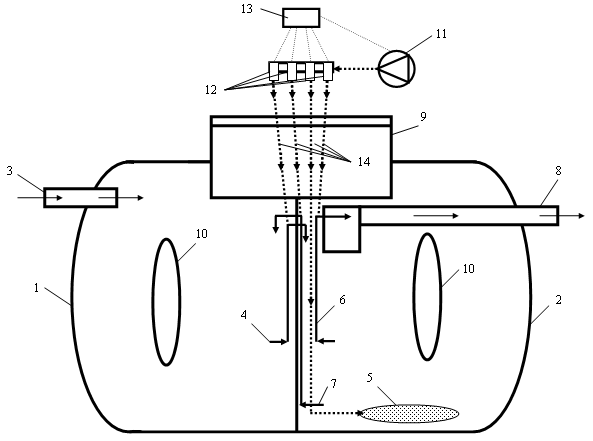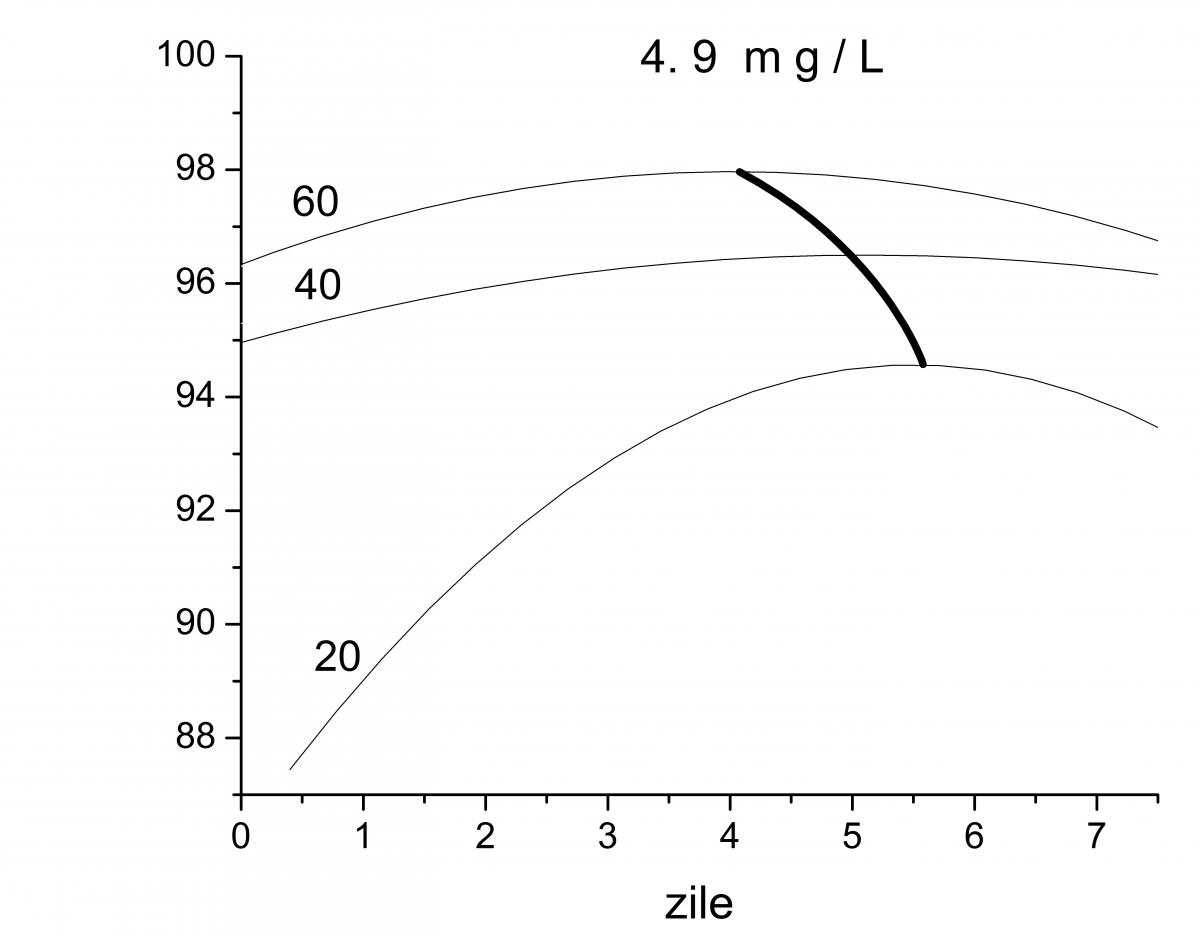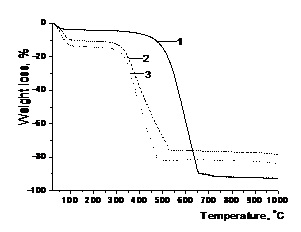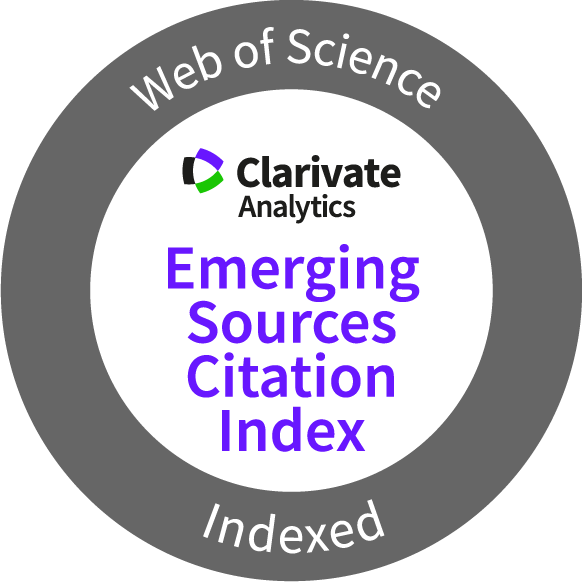Chemistry Journal of Moldova
Industrial chemistry
Author(s):
Field: Industrial chemistry
Type: Research paper
Issue: 2017 Volume 12, no.1
Pages: 67-73
Andrei Ivanets, Vladimir Agabekov
Field: Industrial chemistry
Type: Research paper
Issue: 2017 Volume 12, no.1
Pages: 67-73
Full Text (PDF): Download
Abstract (PDF)
Graphical Abstract: The effect of phase and chemical composition of natural quartz sand, binder and burnable additives was studied. The conditions of application of the membrane and biocide layers on the formation of porous ceramic and microfiltration membranes were investigated. It is shown that a crystalline oxide of Si(IV) is determinant for obtaining the ceramic materials. The presence of carbonates (calcite, dolomite, aragonite, etc.) and crystalline aluminosilicates (microcline, albite, phlogopit, etc.) leads to a decrease in mechanical strength of ceramics. The biocide coating designed to protect the ceramic membrane surfaces from biofouling was applied and its anti-bacterial activity was shown.

Graphical Abstract: The effect of phase and chemical composition of natural quartz sand, binder and burnable additives was studied. The conditions of application of the membrane and biocide layers on the formation of porous ceramic and microfiltration membranes were investigated. It is shown that a crystalline oxide of Si(IV) is determinant for obtaining the ceramic materials. The presence of carbonates (calcite, dolomite, aragonite, etc.) and crystalline aluminosilicates (microcline, albite, phlogopit, etc.) leads to a decrease in mechanical strength of ceramics. The biocide coating designed to protect the ceramic membrane surfaces from biofouling was applied and its anti-bacterial activity was shown.

Downloads: 101
Author(s):
Field: Industrial chemistry
Type: Research paper
Issue: 2017 Volume 12, no.1
Pages: 61-66
Narcis Barsan, Valentin Nedeff, Antonina Temea, Emilian Mosnegutu, Alexandra Dana Chitimus, Claudia Tomozei
Field: Industrial chemistry
Type: Research paper
Issue: 2017 Volume 12, no.1
Pages: 61-66
Full Text (PDF): Download
Abstract (PDF)
Graphical Abstract: Comparing the problems in Romania and Senegal, regarding wastewater treatment, the present paper aims to identify the best methods and techniques to treat the municipal wastewater in small treatment plants with sequential operation. This paper examines the possibility of using Sequencing Batch Reactor (SBR) process to treat the municipal wastewater characterized by low flow. This paper also presents a comparative analysis of the degree of purification achieved in a SBR wastewater treatment plant, as well as legislative regulations in Romania and Senegal. Finally, the paper identifies the possible uses of the treated wastewater in different household activities.

Graphical Abstract: Comparing the problems in Romania and Senegal, regarding wastewater treatment, the present paper aims to identify the best methods and techniques to treat the municipal wastewater in small treatment plants with sequential operation. This paper examines the possibility of using Sequencing Batch Reactor (SBR) process to treat the municipal wastewater characterized by low flow. This paper also presents a comparative analysis of the degree of purification achieved in a SBR wastewater treatment plant, as well as legislative regulations in Romania and Senegal. Finally, the paper identifies the possible uses of the treated wastewater in different household activities.

Downloads: 71
Author(s):
Field: Industrial chemistry
Type: Research paper
Issue: 2017 Volume 12, no.2
Pages: 19-27
Rodica Mariana Diaconescu, Carmen Zaharia
Field: Industrial chemistry
Type: Research paper
Issue: 2017 Volume 12, no.2
Pages: 19-27
Full Text (PDF): Download
DOI: dx.doi.org/10.19261/cjm.2017.394
Abstract (PDF)
Graphical Abstract: The paper proposes an artificial neural network model of multilayers perceptron type (MLP3:10:1) adapted for mechanical-chemical treatment system of an industrial effluent (i.e. coagulation-flocculation - sedimentation applied for an industrial effluent produced in a manufacturing plant of bricks and other ceramics) which is further optimized and tested for its validation.

Graphical Abstract: The paper proposes an artificial neural network model of multilayers perceptron type (MLP3:10:1) adapted for mechanical-chemical treatment system of an industrial effluent (i.e. coagulation-flocculation - sedimentation applied for an industrial effluent produced in a manufacturing plant of bricks and other ceramics) which is further optimized and tested for its validation.

Downloads: 50
Author(s):
Field: Industrial chemistry
Type: Research paper
Issue: 2016 Volume 11, no.1
Pages: 27-32
Larisa Postolachi, Vasile Rusu, Tudor Lupascu
Field: Industrial chemistry
Type: Research paper
Issue: 2016 Volume 11, no.1
Pages: 27-32
Full Text (PDF): Download
DOI: dx.doi.org/10.19261/cjm.2016.11(1).03
Graphical Abstract: Aluminium sulphate is one of the most widely used coagulants for water treatment and has been proven to be an effective coagulant for the removal of certain contaminants, turbidity and colour. Aluminium sulphate used during the coagulation process is hydrolyzed in the water, forming polynuclear complexes. Aged aluminium solutions show different coagulation behaviour than that of freshly prepared solutions. Obtained results reveal that using of optimal aging solution of coagulant improves the coagulation process.

Cite this article as: L. Postolachi, V. Rusu, T. Lupascu. Effect of Aluminium Sulphate Aging on Coagulation Process for the Prut River Water Treatment. Chemistry Journal of Moldova, 2016, 11(1), pp. 27-32. DOI: dx.doi.org/10.19261/cjm.2016.11(1).03
Article Source: Effect of Aluminium Sulphate Aging on Coagulation Process for the Prut River Water Treatment.
Download article metadata: CrossRef BibTeX CERIF Google Scholar DataCite Dublin Core
Downloads: 119
Author(s):
Field: Industrial chemistry
Type: Short communication
Issue: 2015 Volume 10, no.2
Pages: 92-94
Irina Ginsari, Larisa Postolachi, Vasile Rusu, Oleg Petuhov, Tatiana Goreacioc, Tudor Lupascu, Raisa Nastas
Field: Industrial chemistry
Type: Short communication
Issue: 2015 Volume 10, no.2
Pages: 92-94
Full Text (PDF): Download
DOI: dx.doi.org/10.19261/cjm.2015.10(2).12
Graphical Abstract: Four series of samples containing manganese supported carbonaceous adsorbents were prepared. Obtained results reveal the importance of surface chemistry of carbonaceous adsorbents on the manganese loading.

Downloads: 65
Author(s):
Field: Industrial chemistry
Type: Research paper
Issue: 2014 Volume 9, no.1
Pages: 74-79
Carmen Zaharia, Victoria Fedorcea, Adrian Beda, Victor Amarandei, Augustin Muresan
Field: Industrial chemistry
Type: Research paper
Issue: 2014 Volume 9, no.1
Pages: 74-79
Full Text (PDF): Download
DOI: dx.doi.org/10.19261/cjm.2014.09(1).08
Graphical Abstract: The paper presents some data from our laboratory-setup experiments of homogenous oxidative processes with hydrogen peroxide (i.e. advanced Fenton oxidation processes) applied for Remazol Rosso RB dye-containing aqueous systems, especially textile effluents. Therefore, some different operating parameters (including pH, concentration of dye, H2O2 and ferrous ions, oxidation time, temperature, stirring regime, among its) were tested for determination of the best performance in effluent decoloration and dye removal, meaning the optimal values of each studied parameters for highest decoloration or dye removal.
Downloads: 42
Author(s):
Field: Industrial chemistry
Type: Research paper
Issue: 2014 Volume 9, no.1
Pages: 80-84
Lala Jabbarova, Islam Mustafaev, Rauf Rzayev, Zarqalam Nabizade, Navoi Ibadov, Saida Akhmedbekova
Field: Industrial chemistry
Type: Research paper
Issue: 2014 Volume 9, no.1
Pages: 80-84
Full Text (PDF): Download
DOI: dx.doi.org/10.19261/cjm.2014.09(1).09
Graphical Abstract: The results of research in the radiation processing of synthetic oil derived from oil–bitumen rock of the Balakhany deposit in Azerbaijan are presented. The study has been conducted on a 60Co gamma-source at a dose rate of P = 0.5 Gy/s and various absorbed doses of D = 43–216 kGy. Samples of synthetic oil from natural bitumen rocks have been analyzed by chromatography, gas chromatography–mass spectrometry, and IR-spectroscopy, and their radiation resistance has been evaluated. The results of the study allow for both assessment of the feasibility of manufacturing petrochemicals for various applications by radiation processing and use of these materials for isolating radioactive sources to preclude their impact on the environment.
Downloads: 35
Author(s):
Field: Industrial chemistry
Type: Research paper
Issue: 2014 Volume 9, no.1
Pages: 85-92
Maria Gonta, Gheorghe Duca, Vera Matveevici, Larisa Mocanu
Field: Industrial chemistry
Type: Research paper
Issue: 2014 Volume 9, no.1
Pages: 85-92
Full Text (PDF): Download
DOI: dx.doi.org/10.19261/cjm.2014.09(1).10
Graphical Abstract: Advanced oxidation methods of organic compounds lead to their partial mineralization and increase of the adsorption process efficiency on the surface of oxidized activated carbon. We have studied the oxidation process using model solutions containing mixture of dye direct brown (DB), ethylene glycol (EGL) and sodium lauryl sulfate (SLS) under the action of Fenton reagent, in the presence and absence of UV irradiation or under the action of electric current (in the electrochemical cell). The same studies were performed by replacing the iron (II) ion with titanium dioxide.
Downloads: 47
Author(s):
Field: Industrial chemistry
Type: Research paper
Issue: 2013 Volume 8, no.1
Pages: 43-46
G. Torosyan, G. Aidan, N. Torosyan
Field: Industrial chemistry
Type: Research paper
Issue: 2013 Volume 8, no.1
Pages: 43-46
Full Text (PDF): Download
DOI: dx.doi.org/10.19261/cjm.2013.08(1).06
Graphical Abstract: The synthesis of esters of acrylic acids, which are applied for synthesis of polymeric materials by phase transfer catalysis were discussed (PTC), which is very useful for reduction of reaction consumption of materials and power.This method has substantial advantages including high speed of the process, soft condition of reaction and reduced pollution.
Downloads: 73
Author(s):
Field: Industrial chemistry
Type: Research paper
Issue: 2013 Volume 8, no.1
Pages: 47-57
V. Covaliov, O. Covaliova, M. Ivanov, A. Drovosekov
Field: Industrial chemistry
Type: Research paper
Issue: 2013 Volume 8, no.1
Pages: 47-57
Full Text (PDF): Download
DOI: dx.doi.org/10.19261/cjm.2013.08(1).07
Graphical Abstract: The research results of the plating conditions, chemical composition and properties of Ni-B coatings and Ni-Re-B, Ni-Mo-B and Ni-W-B alloys are given. It was shown that introduction of alloying elements (Re, Мо and W) in the composition of Ni-containing coatings modifies the catalytic activity of the alloys’ surface, with regard to the parallel reactions of dimethylamino-borane (DMAB) heterogeneous hydrolysis, Ni reduction and evolving of the molecular hydrogen. It was found that with the increase in concentration of alloying element, boron content in the coatings is decreased to the trace amounts. The effect of alloys composition on hydrogen evolving overvoltage was studied. Due to the low overvoltage of hydrogen evolving (HE) on the alloy Ni-Re-B surface (11 at.% Re), it can be used as electrode for hydrogen generation from water in the electrolytic cell with novel design and improved technical-economic indicators.
Downloads: 20






